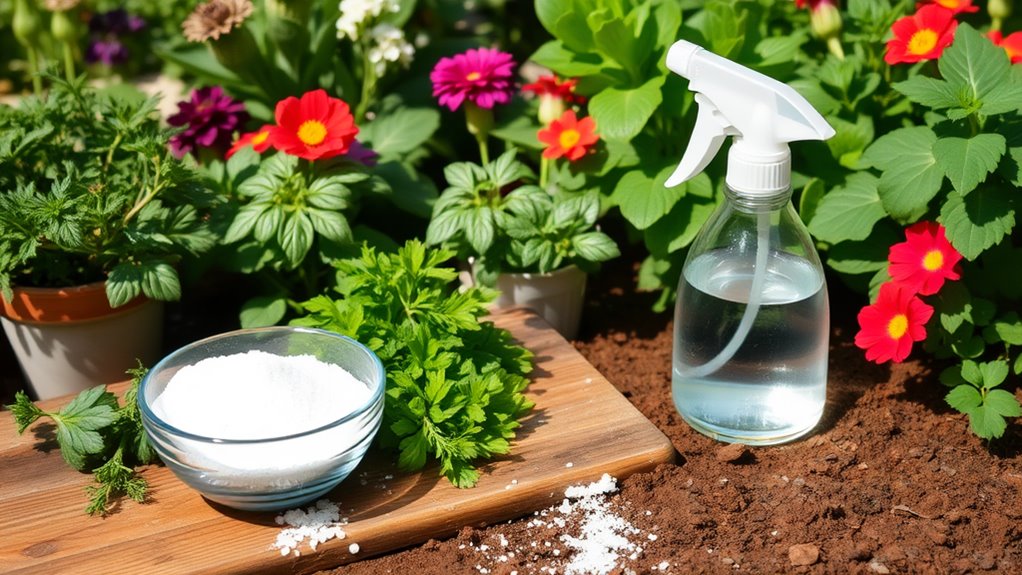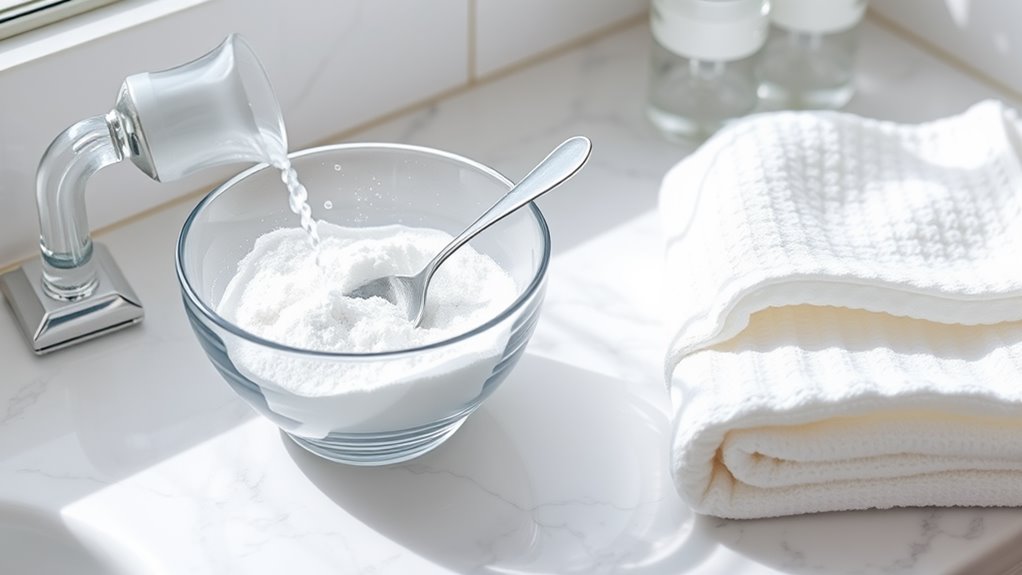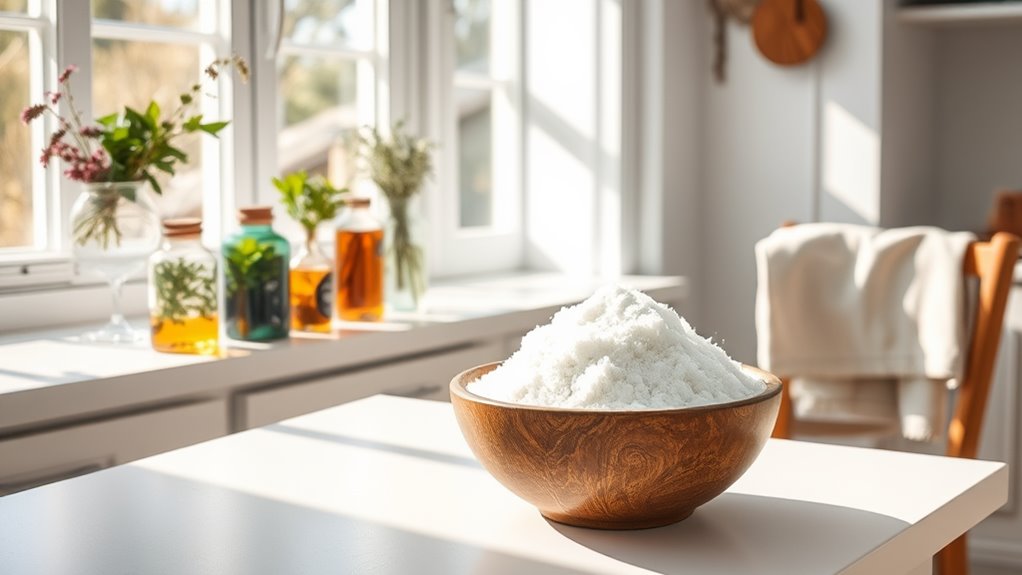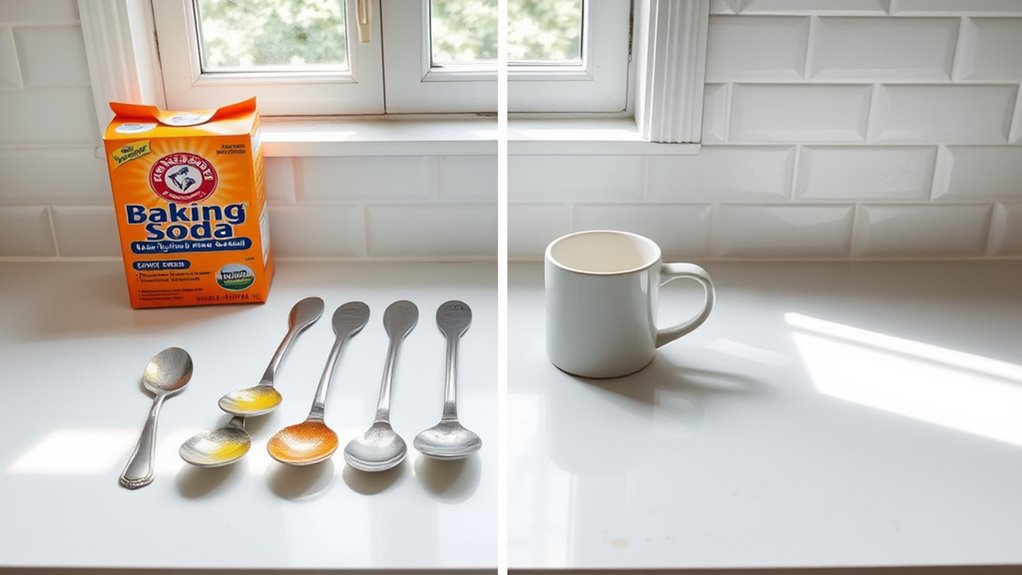How to Use Baking Soda to Freshen Up Your Garden Fast!
There’s a common belief that baking soda can be a game-changer for your garden, but how effective is it really? This simple ingredient offers multiple benefits, from combating mildew to deterring pests and even adjusting soil pH. If you want to freshen up your garden quickly and naturally, you’ll want to know the best ways to use it. Let’s explore how you can harness its power for healthier plants and vibrant blooms.
Key Takeaways
- Mix one tablespoon of baking soda with a gallon of water to create a solution for various garden applications.
- Apply the baking soda solution to the soil around plants to enhance soil health and promote growth.
- Use the solution as a natural fungicide by spraying it on plant leaves to combat mildew and pests.
- Sprinkle baking soda on affected plants to help combat fungal issues and promote a healthier garden ecosystem.
- Regularly monitor your plants after application to ensure they respond well and avoid potential leaf burn.
Benefits of Using Baking Soda in the Garden
When you incorporate baking soda into your gardening routine, you gain a variety of benefits that can enhance plant health and growth.
One of the standout uses is for hydrangeas; baking soda can help adjust soil pH, promoting vibrant blooms.
It also acts as a natural fungicide, protecting your plants from common diseases.
Additionally, baking soda can deter pests without harsh chemicals, keeping your garden safe and eco-friendly.
Regularly using this versatile ingredient can improve soil structure and nutrient availability, ultimately leading to healthier, more resilient plants.
By adjusting the soil pH with baking soda, you create optimal conditions for plant growth and nutrient absorption.
Embrace baking soda for a thriving garden that flourishes all season long!
Preparing Your Baking Soda Solution
To prepare your baking soda solution, start by mixing one tablespoon of baking soda with a gallon of water. Make sure to stir well until the baking soda completely dissolves.
This solution acts as a natural remedy for various garden issues, enhancing soil health and helping with plant growth. Additionally, soil pH testing can be performed using this solution to ensure optimal conditions for your plants.
You can adjust the concentration based on your specific needs, but this basic formula works effectively for most applications.
Always test a small area first to make sure your plants respond positively.
Store any unused solution in a cool, dark place for future use, making your gardening efforts even more efficient.
Application Methods for Hydrangeas
How can you effectively use baking soda to enhance the health of your hydrangeas?
Start by mixing one tablespoon of baking soda with a gallon of water.
This solution acts as a natural fungicide, combating mildew and pests.
Pour it directly onto the soil around your hydrangeas or use a spray bottle to mist the leaves, ensuring you cover both the top and bottom surfaces.
For best results, apply this solution every two weeks during the growing season.
Keep an eye on your plants; if you notice any signs of distress, adjust your application frequency accordingly.
Additionally, baking soda acts as a gentle exfoliant for your plants by helping to remove any residual pests on the leaves.
Enjoy vibrant, healthy blooms!
Dos and Don’ts for Optimal Results
What should you keep in mind to get the best results when using baking soda in your garden?
First, always dilute it with water before applying it to avoid overwhelming your plants. Use a ratio of one tablespoon of baking soda to one gallon of water for effective results.
Don’t apply it too frequently; once every few weeks is sufficient.
Avoid using it on delicate plants, as it can cause leaf burn.
Finally, monitor your garden closely after application; watch for any adverse reactions.
Following these dos and don’ts will help you enjoy a healthier, fresher garden in no time!
Additional Uses of Baking Soda in Gardening
Ever wondered how baking soda can enhance your gardening routine beyond pest control? This versatile ingredient can also help with soil pH adjustment.
If your soil’s too acidic, mix baking soda with water and apply it to raise the pH.
You can even use it to combat fungal issues; just sprinkle it on affected plants to deter further growth.
Additionally, mix baking soda with water and a few drops of dish soap to create a natural deodorizer for compost bins.
Finally, use it to clean your gardening tools—just a sprinkle and a scrub will keep them rust-free and in top shape! Plus, baking soda’s ability to neutralize odors can also help keep your gardening area smelling fresh.



